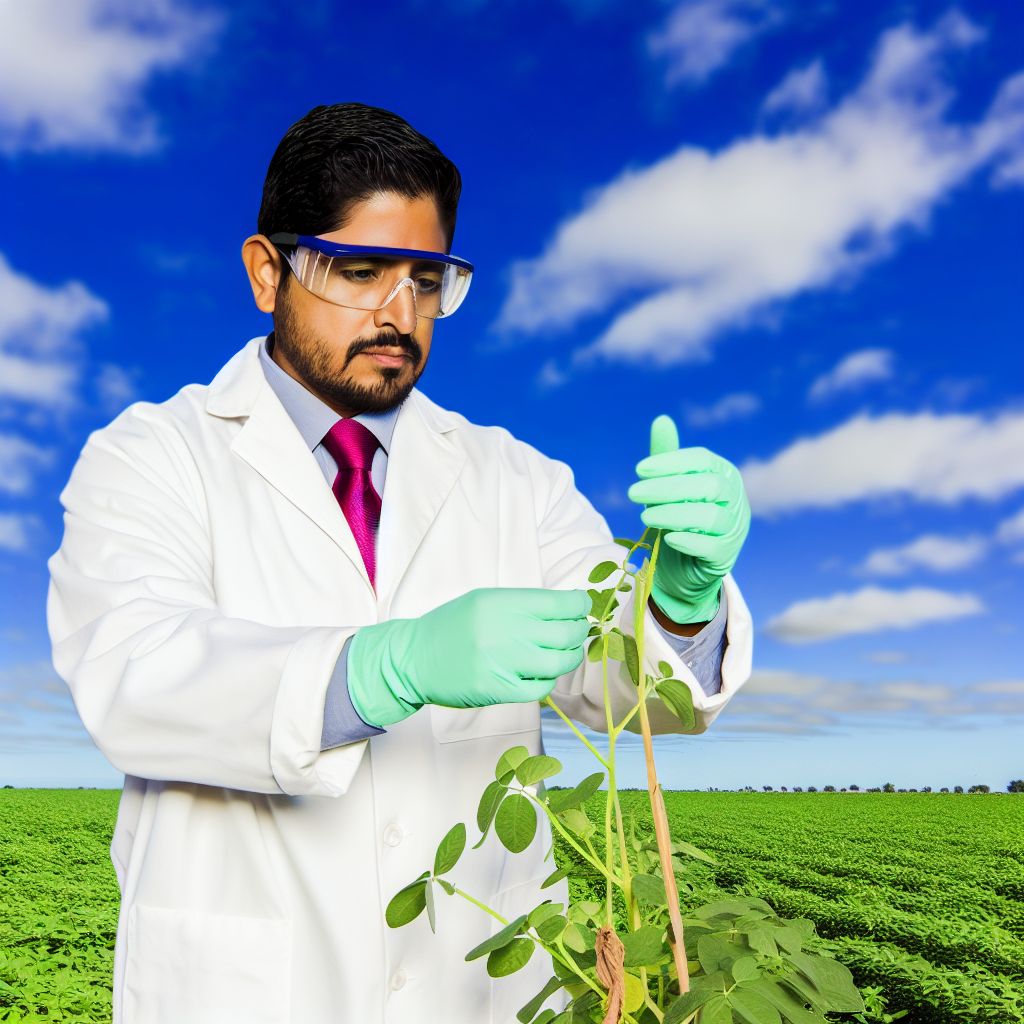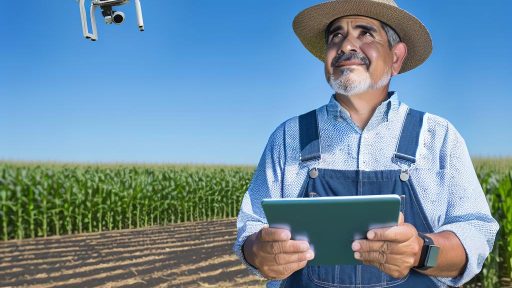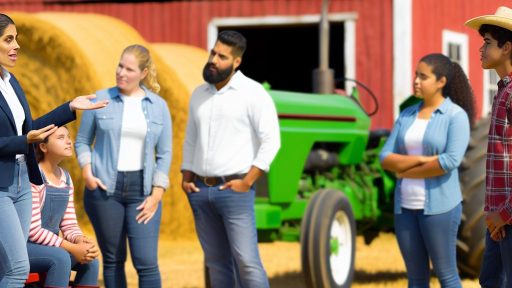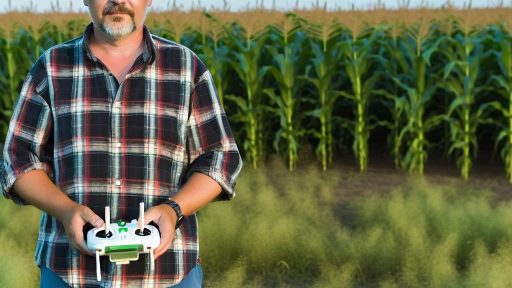Introduction to Biodegradable Packaging and Its Importance in Sustainable Agriculture
Biodegradable packaging plays a vital role in sustainable agriculture.
This packaging breaks down naturally through environmental processes.
In contrast to traditional plastic, it minimizes pollution.
Farmers increasingly rely on biodegradable packaging to support eco-friendly practices.
It reduces waste in the agricultural supply chain.
Moreover, it contributes to soil health when composted.
Crops packaged in biodegradable materials may have lower chemical residues.
Consequently, consumers get safer produce and healthier ecosystems.
Furthermore, biodegradables help farmers meet consumer demands for sustainability.
Transitioning to these solutions addresses pressing environmental concerns.
With the rise in global awareness, sustainable practices gain significance quickly.
Biodegradable options enhance market appeal for farmers and brands alike.
These solutions support the goal of reducing reliance on fossil fuels.
As a result, agricultural operations become more economically and environmentally viable.
Biodegradable packaging is crucial for the future of sustainable agriculture.
Transform Your Agribusiness
Unlock your farm's potential with expert advice tailored to your needs. Get actionable steps that drive real results.
Get StartedTypes of Biodegradable Packaging Materials
Plant-based Plastics
Plant-based plastics derive from renewable resources.
They use materials like corn starch and sugarcane.
These alternatives break down more easily than traditional plastics.
Additionally, they can reduce carbon footprints significantly.
Companies like NatureWorks lead in producing these green options.
Furthermore, plant-based plastics find applications in various sectors.
They are particularly useful in packaging food products.
Compostable Materials
Compostable materials offer another viable solution.
These materials decompose in composting environments.
They return vital nutrients back to the soil.
Common examples include PLA (polylactic acid) and PHA (polyhydroxyalkanoates).
These substances come from natural sources, ensuring a minimal environmental impact.
Organizations like BioBag International promote compostable packaging products.
Their innovations focus on enhancing sustainability in agricultural practices.
Paper and Cardboard Packaging
Moreover, paper and cardboard are widely accepted biodegradable options.
These materials can come from recycled sources.
This practice encourages a circular economy approach.
Paper packaging breaks down quickly and is easily recyclable.
Many farmers opt for this type due to its low environmental impact.
Brands like Eco-Products prioritize sustainable paper-based solutions.
They offer a range of products designed for eco-conscious consumers.
New Innovations in Biodegradable Packaging
The industry continues to see exciting innovations in biodegradable options.
For instance, scientists explore mycelium-based packaging.
Mycelium, derived from fungi, can create strong, eco-friendly solutions.
Showcase Your Farming Business
Publish your professional farming services profile on our blog for a one-time fee of $200 and reach a dedicated audience of farmers and agribusiness owners.
Publish Your ProfileAdditionally, seaweed-based packaging emerges as a promising alternative.
This option biodegrades in both land and marine environments.
Firms such as Algix focus on developing seaweed-based products.
Their commitment aligns with a broader goal of reducing plastic waste.
Challenges and Future Directions
Despite these advancements, challenges remain in the biodegradable packaging market.
Consumers often find biodegradable options more expensive than conventional ones.
Moreover, awareness and education about these materials are crucial.
Many people still lack understanding of their benefits.
To address these issues, partnerships among companies can help.
Collaborative efforts can drive innovation and improve accessibility.
The future looks promising for biodegradable packaging solutions.
Their role in supporting sustainable agriculture is ever-increasing.
Benefits of Biodegradable Packaging for Farmers and Agricultural Producers
Reduction of Environmental Impact
Biodegradable packaging significantly reduces waste in landfills.
It breaks down naturally, minimizing pollution levels.
This practice enhances soil health and supports ecosystems.
Cost-Effectiveness for Producers
Using biodegradable packaging can lower disposal costs.
Farmers may save money on waste management services.
As a result, this approach can improve the bottom line.
Enhancement of Marketability
Consumers increasingly prefer environmentally friendly products.
Biodegradable packaging appeals to eco-conscious buyers.
This can lead to increased sales and brand loyalty.
Compliance with Regulations
Many regions are enacting stricter packaging regulations.
Biodegradable options help farmers meet these legal requirements.
Staying compliant avoids potential penalties and enhances reputation.
Support for Sustainable Practices
Using biodegradable materials aligns with sustainable agriculture goals.
Farmers contribute to a circular economy through this choice.
This synergy promotes long-term agricultural viability.
Improved Product Quality
Biodegradable packaging can help preserve product freshness.
It reduces spoilage and waste during transportation.
Thus, farmers deliver higher quality products to consumers.
Discover More: Renewable Energy Technologies for Livestock Farming
Case Studies: Successful Implementation of Biodegradable Packaging in Agriculture
Introduction to Biodegradable Packaging
Biodegradable packaging plays a vital role in sustainable agriculture.
It reduces waste and minimizes environmental impact.
Farmers are increasingly adopting these solutions for better productivity.
Case Study: Green Fields Farm
Green Fields Farm has implemented biodegradable packaging for its produce.
This farm specializes in organic fruits and vegetables.
They switched from plastic to biodegradable materials two years ago.
The results have been impressive and promising.
Improved Product Quality
Biodegradable packaging maintains the freshness of products longer.
As a result, customer satisfaction has significantly increased.
Showcase Your Farming Business
Publish your professional farming services profile on our blog for a one-time fee of $200 and reach a dedicated audience of farmers and agribusiness owners.
Publish Your ProfileCustomers appreciate the eco-friendly packaging options.
Supporting Local Ecosystems
Using these materials has reduced plastic waste in surrounding areas.
This helps protect local flora and fauna.
Furthermore, it aligns with the farm’s commitment to sustainability.
Case Study: EarthCare Produce
EarthCare Produce adopted biodegradable packaging last year.
This company focuses on delivering locally sourced fruits.
They aimed to enhance their sustainability practices.
Community Impact
EarthCare’s decision has fostered positive community feedback.
Local farmers have joined the initiative to reduce plastic use.
Additionally, workshops on sustainable practices have been organized.
Sales Growth
Since the transition, sales have increased by 30%.
Customers are drawn to the green packaging approach.
Many prefer to support businesses with sustainable practices.
Case Study: EcoPack Solutions
EcoPack Solutions provides biodegradable packaging to agriculture firms.
They have collaborated with multiple farms to implement this change.
Their mission focuses on reducing environmental footprints.
Innovation in Packaging
EcoPack offers various innovative biodegradable options.
These include compostable trays, bags, and wraps.
All products are derived from renewable resources.
Partnership and Education
They provide educational resources to farmers about biodegradable options.
Workshops help farmers understand the benefits of these materials.
As a result, more farms are shifting towards sustainable practices.
Benefits of Biodegradable Packaging in Agriculture
These case studies highlight the benefits of biodegradable packaging.
They illustrate successful strategies for sustainable agriculture.
This shift towards environmentally friendly solutions is essential.
It supports both the agricultural industry and planet health.
Uncover the Details: Streamlining Farm Finances With Advanced Agri-Fintech Solutions
Challenges Facing the Adoption of Biodegradable Packaging Solutions
Understanding Market Resistance
Many companies hesitate to invest in biodegradable packaging.
This resistance stems from concerns about cost and functionality.
Furthermore, traditional packaging methods dominate the market.
As a result, many businesses fear losing competitive advantages.
Consumer Awareness and Perception
Consumer understanding of biodegradable options is often limited.
This gap in knowledge affects purchasing decisions negatively.
Moreover, some consumers view biodegradable products as inferior.
Education efforts are crucial to shifting these perceptions.
Technical Limitations
Currently, biodegradable materials face significant technical challenges.
These materials often have shorter shelf lives compared to traditional options.
Additionally, their performance in varied environments can be inconsistent.
This inconsistency raises concerns among producers and retailers.
Regulatory Hurdles
Regulatory frameworks can impede the adoption of new technologies.
Showcase Your Farming Business
Publish your professional farming services profile on our blog for a one-time fee of $200 and reach a dedicated audience of farmers and agribusiness owners.
Publish Your ProfileInconsistent regulations across regions confuse manufacturers.
Moreover, the lack of standardized definitions for biodegradable materials complicates matters.
Supply Chain Issues
Building a reliable supply chain for biodegradable packaging requires time.
Many suppliers lack the infrastructure to produce these materials at scale.
This inefficiency may cause delays and increase costs.
Consequently, businesses may opt for traditional packaging instead.
Financial Constraints
The initial investment in biodegradable packaging can be high.
Smaller companies particularly feel these financial pressures.
Financing options for green technologies can be limited and challenging.
Funding innovations may lag behind other sectors of the industry.
Explore Further: Drones In Agriculture: Improving Harvest Accuracy

Comparing Biodegradable Packaging with Traditional Packaging Alternatives
Introduction to Packaging Types
Packaging plays a crucial role in agriculture and food distribution.
It protects products during transportation and extends shelf life.
However, conventional packaging materials often contribute to environmental issues.
In contrast, biodegradable packaging offers a more sustainable solution.
Understanding Biodegradable Packaging
Biodegradable packaging breaks down naturally through biological processes.
It reduces waste accumulation in landfills and oceans.
This type of packaging often uses materials like plant starches and bioplastics.
Conversely, traditional packaging typically relies on plastics and non-renewable resources.
Environmental Impact
Traditional packaging generates significant plastic waste each year.
Biodegradable options help mitigate this problem.
They decompose into natural substances, enhancing soil health.
Moreover, biodegradable materials emit fewer greenhouse gases during production.
Cost Considerations
Initially, biodegradable packaging may seem more expensive than traditional options.
However, as technology advances, costs continue to decrease.
Moreover, brands adopting these solutions appeal to eco-conscious consumers.
This shift can lead to increased sales and brand loyalty.
Performance and Versatility
Some worry that biodegradable packaging may not perform as well as traditional packaging.
Yet, advancements in material science have improved performance significantly.
Biodegradable packaging effectively protects products just as well.
Additionally, it can be tailored for various agricultural products.
Consumer Preference and Trends
Today’s consumers are increasingly aware of sustainability issues.
They prefer brands that demonstrate environmental responsibility.
Biodegradable packaging meets this demand effectively.
Companies using eco-friendly packaging enhance their market appeal.
Implications for Sustainable Packaging Solutions
Switching from traditional to biodegradable packaging supports sustainable agriculture.
It addresses environmental concerns while meeting consumer demands.
Ultimately, the transition promotes a healthier planet and future.
You Might Also Like: Smart Irrigation Systems Powered By AI
Regulatory Framework and Standards for Biodegradable Packaging in Agriculture
Importance of Regulations
Regulations ensure that biodegradable packaging meets specific environmental standards.
Showcase Your Farming Business
Publish your professional farming services profile on our blog for a one-time fee of $200 and reach a dedicated audience of farmers and agribusiness owners.
Publish Your ProfileThey help protect ecosystems from harmful materials.
Furthermore, regulations promote consumer confidence in sustainability claims.
Key Regulatory Bodies
Several organizations oversee biodegradable packaging regulations.
The U.S. Department of Agriculture (USDA) sets critical guidelines.
The Environmental Protection Agency (EPA) also plays a significant role.
Relevant Standards
Standards define what qualifies as biodegradable packaging.
The ASTM International provides specifications for compostable products.
These specifications guide manufacturers in producing compliant materials.
Moreover, the ISO 17088 standard addresses compostable plastics specifically.
Recent Changes in Regulations
In recent years, regulations have evolved to address new environmental challenges.
2022 saw the introduction of stricter guidelines on plastic alternatives.
This shift encourages the use of truly biodegradable materials.
Certification Processes
Certification ensures that biodegradable packaging meets set standards.
Companies often seek third-party certification for credibility.
The Biodegradable Products Institute (BPI) offers certifications for compostable products.
Future Directions
Regulatory frameworks are likely to evolve further in the coming years.
Innovations in material science will drive new guidelines.
As public interest grows, support for greener options increases.
Future Trends in Biodegradable Packaging and Their Potential Impact on Sustainable Agriculture
Emerging Materials
Innovative biodegradable materials are transforming the packaging landscape.
New polymers derived from starch, cellulose, and chitosan are gaining popularity.
These materials decompose more efficiently than traditional plastics.
Farmers are starting to adopt these materials for seed and fertilizer packaging.
Consequently, they reduce plastic waste in agricultural environments.
Enhanced Supply Chain Efficiency
Biodegradable packaging streamlines the supply chain for farmers.
It often weighs less, leading to lower transportation costs.
Additionally, its compostable properties can enrich the soil post-use.
Farmers can return organic matter back to the earth, improving soil health.
As a result, productivity can see significant enhancements over time.
Regulatory Support and Consumer Demand
Governments are increasingly supporting biodegradable solutions.
New regulations promote eco-friendly practices in agriculture.
Consumers also demand sustainable packaging options from brands.
This consumer pressure drives companies to seek biodegradable alternatives.
Farmers benefit from this shift as their products become more marketable.
Investments in Research and Development
Investments in biodegradable packaging technologies are on the rise.
Companies are funding research to improve the durability of these materials.
Such advancements can lead to extended shelf life for agricultural products.
In turn, this minimizes waste and maximizes profit margins for farmers.
Collaboration Among Stakeholders
Collaboration between farmers, manufacturers, and researchers creates synergies.
Joint efforts can enhance the development of effective packaging solutions.
This partnership can address specific agricultural challenges and needs.
Showcase Your Farming Business
Publish your professional farming services profile on our blog for a one-time fee of $200 and reach a dedicated audience of farmers and agribusiness owners.
Publish Your ProfileMoreover, knowledge sharing fosters innovation across the sector.
Ultimately, this collaborative approach can lead to sustainable practices.
Additional Resources
Killing weeds and nurturing crops: sustainable agriculture at its finest
Eco-Friendly Farming: Alternatives to Plastic in Agriculture …




